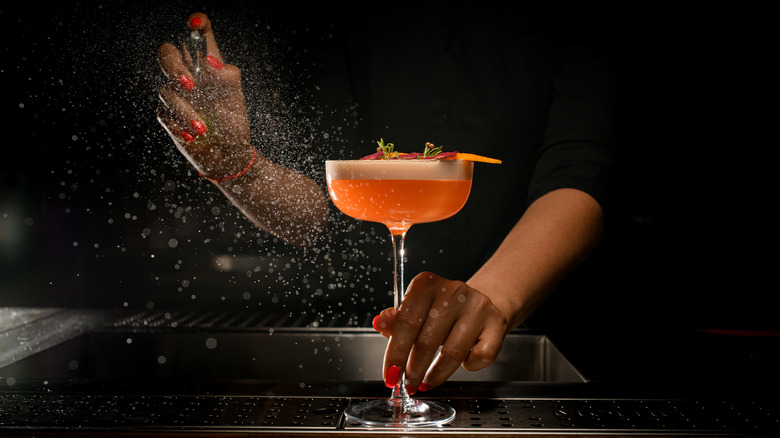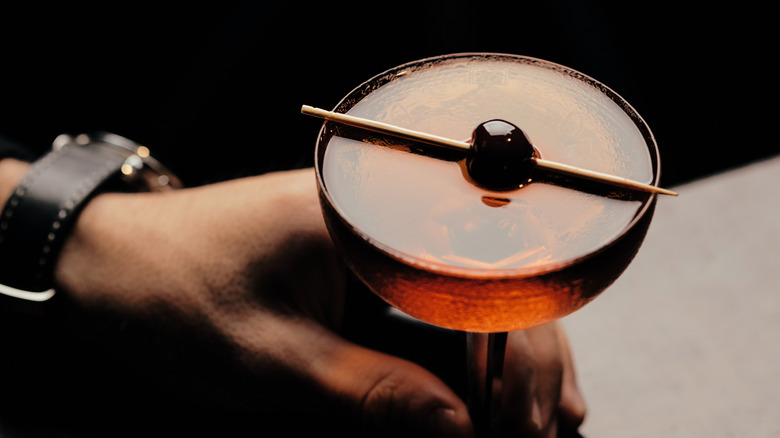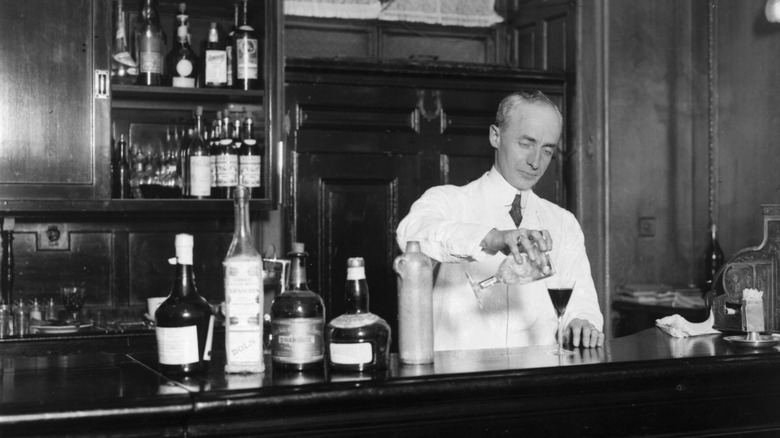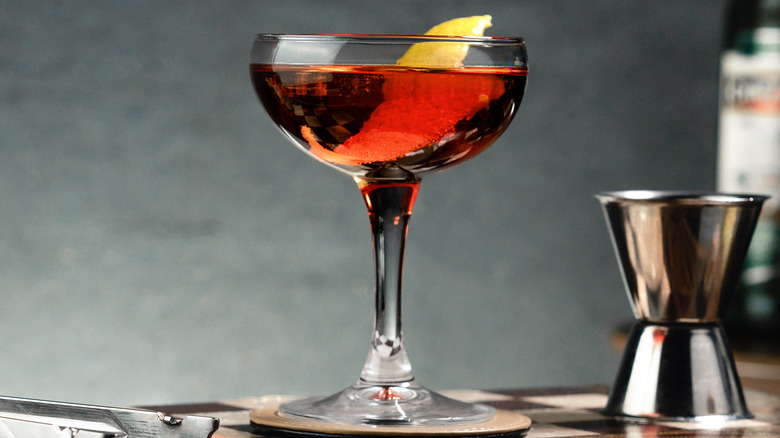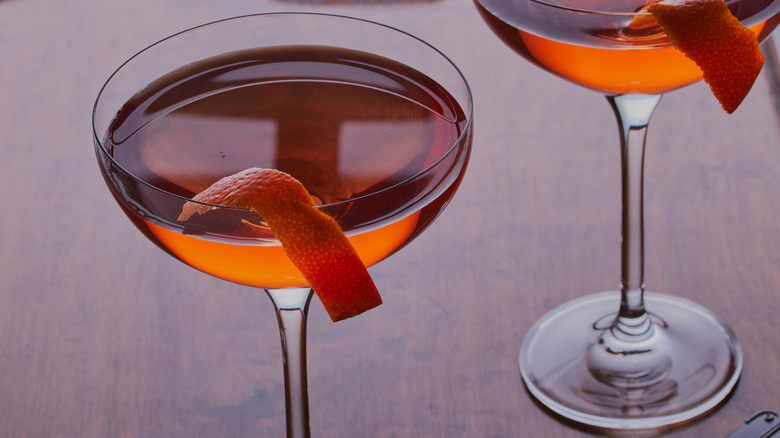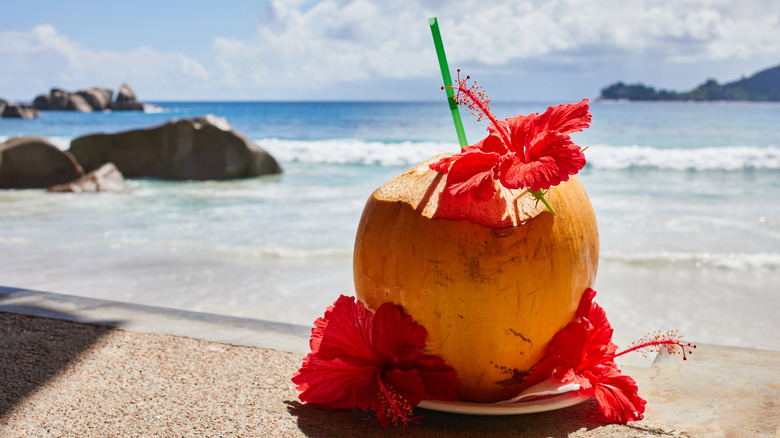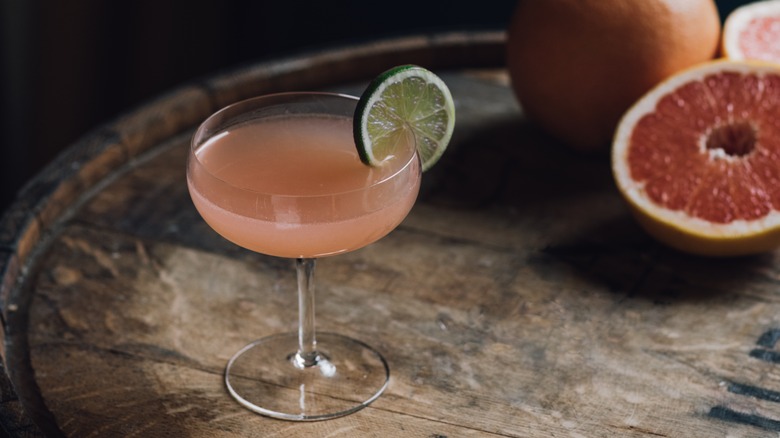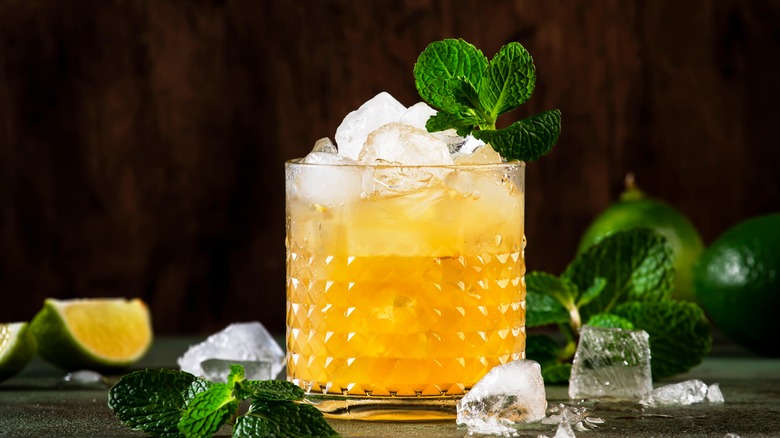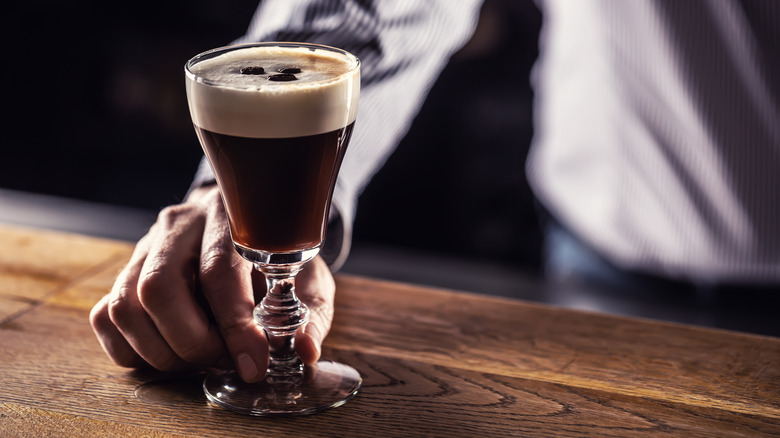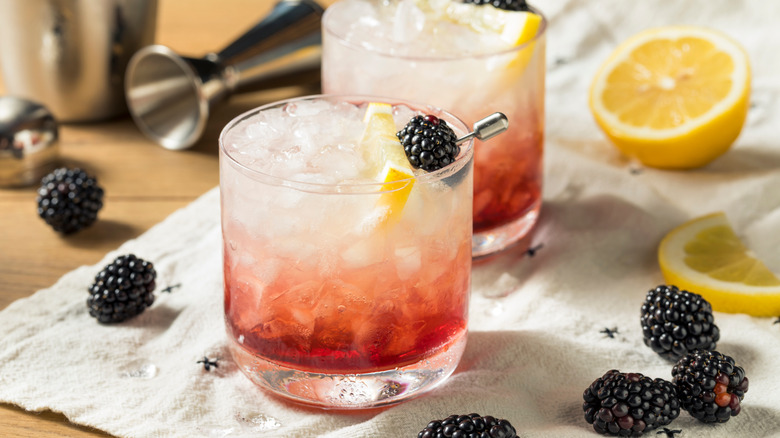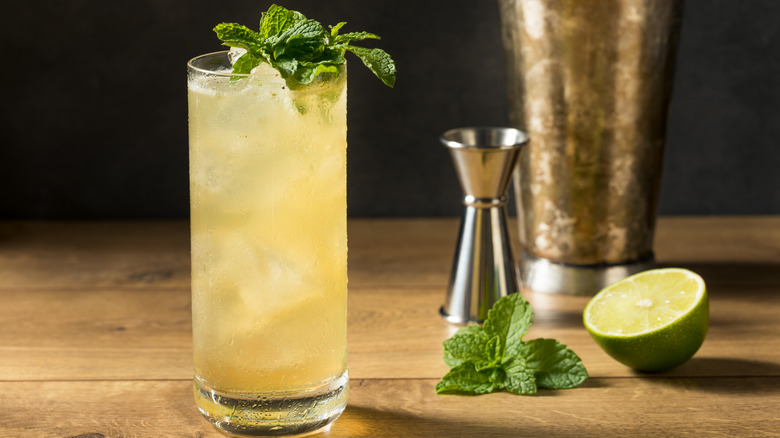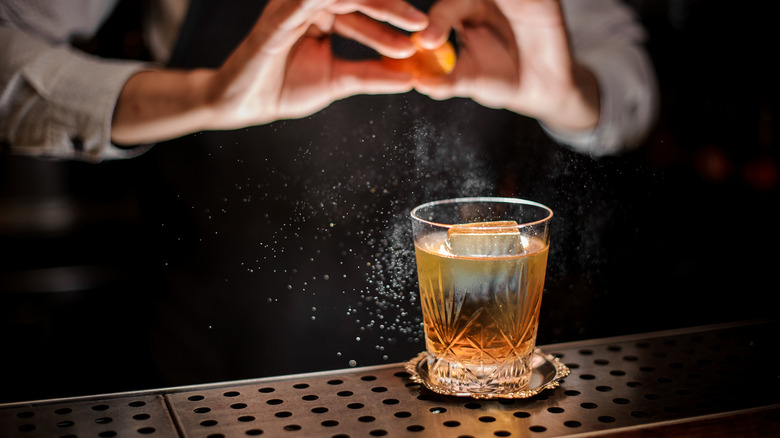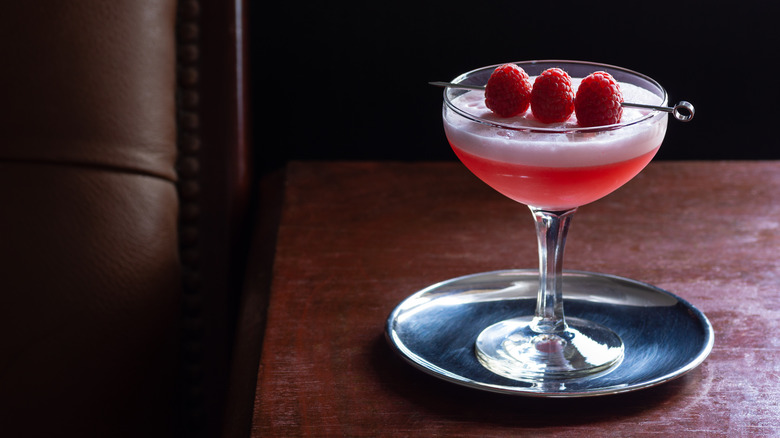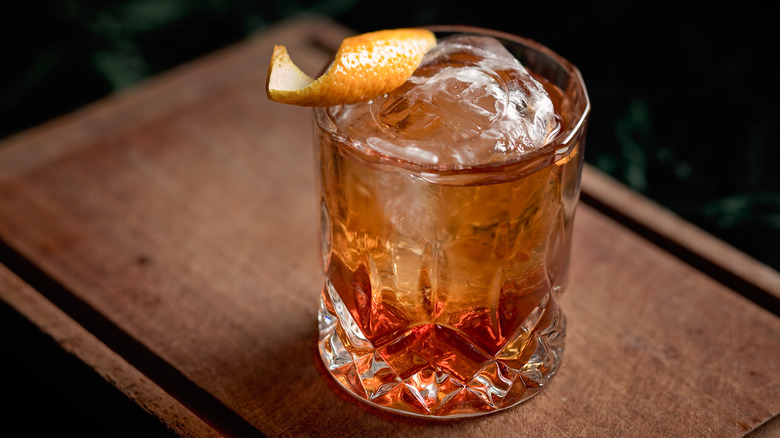13 Influential Bartenders You Should Know About
There is no doubt that there has never been a better era of cocktails than right now. Bartenders across the country and world are constantly experimenting, reinventing, and pushing out both new takes on classics in addition to entirely new creations. We are currently living in a golden age of mixology, but it was not always like that. In fact, this could better be described as a second golden age of mixology.
The history of cocktails and bartending dates back centuries, with the first definition of a cocktail being published in 1806 as "a stimulating liquor composed of any kind of water, sugar, and bitters," according to Vinepair. Clearly, the craft of bartending has grown beyond the punches and bittered slings of old, but this evolution did not just happen naturally.
Any form of progression requires an innovative catalyst, and there have been many bartenders who pushed the envelope, inspired the next generation, or simply struck gold at the right time. Regardless, any cocktail mixed by a bartender today can be traced back over a century, with many instances of creativity evolution along the way to make it what it is now. Here are some of the bartenders that made that happen.
Jerry Thomas
Every topic has a foundation to its history, and Jerry Thomas is the foundation of bartending. Jerry "The Professor" Thomas is still known today as the founding father of modern bartending thanks to the countless ways he revolutionized the craft, according to Difford's Guide.
The oldest known bartending book was written by Thomas, titled "Jerry Thomas's Bartender's Guide: How to Mix Drinks, or the Bon Vivant's Companion," published in 1862. The book is regarded as a sort of mixology Bible, which Thomas was able to write by constantly traveling across the country and keeping every cocktail recipe he could find. It includes the earliest known recipes for the Old Fashioned, Manhattan, and other timeless classics. Many editions were published after the original, each one including more discoveries and recipes still used by bartenders today.
Thomas was also a champion of flair bartending, turning the humble trade of mixing drinks for customers into an entertaining and thoughtful art form. His signature cocktail creation is the Blue Blazer, which is made by pouring flaming whiskey between two glasses. Thomas' contributions to bartending may be more about how to style as opposed to original inventions, but, nevertheless, he remains the king.
Harry Craddock
Harry Craddock was born in England in 1875, but moved to the United States at the end of the 19th century, according to Alcademics. He bartended, primarily, in New York, until the passing of Prohibition. Then, he returned to his home country and started working in London. According to legend, Craddock mixed the final cocktail in the U.S. before Prohibition was officially implemented in 1920.
He then moved back to London and began bartending at the Savoy Hotel, where Craddock quickly became the head bartender. At this time, the cocktail scene in London was quite downtrodden, and Craddock used his experience in America to invigorate it. He introduced his original creations such as the White Lady to the scene, as well as different originals he developed and other drinks Brits had not yet become familiar with.
Eventually, Craddock found himself with 2,000 recipes, so he published them in the "Savoy Cocktail Book" in 1930, his most notable contribution to bartending. This book is still a must-read for bartenders working today and continues to be a tool for understanding the principles of balance and structure in a drink.
Harry MacElhone
Harry MacElhone is another British-born bartender that moved to the United States and ended up taking his craft with him back to Europe. However, MacElhone returned to Britain following the end of the First World War, according to Cocktail Society.
After he returned, he began bartending at Ciro's Club in London, where the owner pushed him to publish a cocktail book. Then, MacElhone was sent to Deauville, France to open another iteration of the bar. A couple of years later, MacElhone was able to purchase a bar he had worked at before emigrating to America, called New York Bar in Paris.
He renamed the place Harry's New York Bar, and it was here that MacElhone invented some of the earliest Negroni variations ever. He invented both the Boulevardier and Old Pal at this location, both of which he included in his several cocktail books. At the time, most Americans had no idea what Campari even was, and MacElhone is responsible for introducing the aperitivo to countless Americans visiting Paris.
Harry's New York Bar became a legendary cocktail lounge from then on, serving drinks to people such as Coco Chanel and Humphrey Bogart. It is even referenced in Ian Fleming's novel "Casino Royale" when James Bond refers to it as the best place to get a drink in Paris.
Ada Coleman
Ada Coleman is one of the most impactful bartenders ever as well as one of the most famous women bartenders ever. Coleman worked during a time when women bartenders were both discouraged and very hard to come by. According to Vinepair, during the time Coleman was bartending, there were an estimated 55,000 male bartenders and just 147 female bartenders in the United States.
Coleman began bartending in 1899 and eventually moved on to the acclaimed Savoy Hotel in London. Soon after her arrival, Coleman earned a promotion to become the hotel's first female head bartender, an accomplishment still yet to be replicated. During her time as head bartender at the Savoy Hotel, Coleman created the cocktail that continues to keep her memory alive, the Hanky Panky. Coleman created the drink specifically for a regular guest that would often request new drinks and critique them for her. On one occasion, Coleman already had a drink ready, and after one sip, the guest exclaimed, "This is the real hanky-panky!" And the name stuck.
Despite being a pioneer for women in her industry, Coleman was more well-known for her humor and personality behind the bar. She was so beloved by her customers and always served them a great time in addition to cocktails, which is more of a contribution than anything.
Ernest Gantt
If you have ever sipped a cocktail from a hollowed-out pineapple or coconut or sat at a tiki-themed bar decorated with straw and bamboo, you have benefited from the influence of Ernest Beaumont Gantt. Gantt is single-handedly responsible for the tiki genre of drinks, with the beginning of the tiki craze beginning with the opening of Don's Beachcomber Cafe in Los Angeles in 1934 (via Punch).
At the time, tiki drinks were not even a thing, and with the opening of his bar, Gantt introduced the inspiration he acquired from his trips to the Caribbean to his cocktail craft. He went so far as to legally change his name to Donn Beach.
The tiki realm of mixology has made a robust return in the past couple of decades, as countless drinks full of fruit juice garnished with pineapple fronds and other fresh ingredients are now mainstream. It was Gantt, however, that started freshly pressing citrus juices, utilizing fresh fruit, and making a spectacle of a cocktail, all of which are common practices of the modern cocktail renaissance.
Even if you think tiki bars are corny or changing your name to Donn Beach is a little self-indulgent, you cannot deny Ernest Gantt's impact on drink-making. All of the standard rituals bartenders go through today are credited to him.
Constante Ribalaigua Vert
There are some bartenders who receive acclaim for reinventing an already popular drink with their own spin. Constante Ribalaigua Vert's reinvention of the daiquiri, however, ended up being just as popular, if not more.
The so-called "Cocktail King of Cuba," as locals referred to him, was the bartender at El Floridita in Havana, the world-famous bar and favorite drinking spot of Ernest Hemingway, per NPR. It is here that Ribalaigua invented the "Papa Doble," or Hemingway Daiquiri, and had one ready to serve the great writer every single day.
The creation of this widely known and popular daiquiri variation is only the surface of what Ribalaigua accomplished, however. The bartender is known to have invented over 200 original cocktails, which he served to thirsty Americans visiting Cuba for a break from Prohibition. Ribalaigua was the first bartender to frappe cocktails, meaning using crushed ice to make a sort of slushy out of them. He also never used measuring divides, instead free pouring every ingredient without an ounce of liquid left over.
To make Ribalaigua even more impressive, he didn't drink. So, he came up with his endless catalog of original creations without ever tasting himself. As an expert at his craft, he simply understood what worked and what didn't. Constante Ribalaigua Vert was an institution of Havana, and one of the finest bartenders that ever lived.
Victor Bergeron Jr.
Victor Bergeron founded the Trader Vic's brand in 1934 in Oakland, California with the opening of a bar and restaurant called Hinky Dinks (via Famous Hotels). This was the first of hundreds of locations owned by the bar company, which eventually became an institution throughout the west coast and beyond. The Polynesian-themed bars saw countless inventions of original drinks, all carefully created and garnished with a tropical vibe in mind.
Trader Vic's cocktails were fun, unique, and always the perfect beverage to go along with the great food served with it. There is no cocktail, however, that has become as popular as the Mai Tai. The drink was invented by Bergeron himself in 1944. He grew tired of the typical classic cocktails and decided to create his own with that same simplicity in mind. Bergeron poured some aged Jamaican rum into a shaker, along with lime juice, orange curacao, sugar syrup, and orgeat, or almond syrup. He shook it all together and perhaps the greatest cocktail ever was born.
Today, there are seemingly countless renditions of the Mai Tai, and every bartender who comes up with their own version of the classic rum cocktail today has Victor Bergeron, or "Trader Vic," to thank for that.
Dale Degroff
Around the middle of the 20th century, cocktail culture started to fizzle out. There are few notable breakthroughs for several decades. That is until Dale Degroff ignited what became a second golden age of cocktails, rightfully earning him the nickname, "King Cocktail."
Dale Degroff was the head bartender at the famous Rainbow Room in New York City in the 1990s. It was here that Degroff brought back the philosophy behind the drinks of the 19th century with a modern approach and twist, the fundamental principle of the modern cocktail boom. Some of the most notable and popular improvements he made include the Sidecar, Irish Coffee, and the Pisco Sour.
Degroff invented many cocktails throughout his 40-year career, but the most important thing he left behind, other than inspiration to future bartenders, was his books. The most essential book of Degroff's is "The Craft of the Cocktail," published in 2002, in which Degroff explains modern bartending theory, fusing together the old with the new. The book is considered required reading for any bartender today and has impacted the entirety of hospitality in one way or another. Degroff has won two James Beard Awards and the Cocktail Legend Award by Wine Enthusiast. He is a living legend who has left an eternal mark on his craft.
Dick Bradsell
Just as Dale Degroff revitalized the cocktail scene in New York, Dick Bradsell did so in London. England's capital was especially suffering in terms of mixology during the 1970s and early 1980s, per Sip Smith. Lemon and lime juice was only found in store-bought bottles, the drinks were boring, and the use of ice wasn't even considered important. Luckily, Bradsell changed all of that.
Bradsell began his bartending career through training from the Army and Navy Club in London, after which he worked at multiple bars in the city. It was at Fred's Club, however, that he did his best work. Here, Bradsell invented modern classics such as the Espresso Martini, Bramble, and Treacle, before taking his talents elsewhere in London.
After Bradsell made a name for himself by basically reinventing the bar program at every establishment he worked at, every cocktail bar in London followed in his footsteps. From then on, bartenders only used fresh citrus juice, were generous with ice, chilled their glassware, and mixed cocktails the same way chefs cooked food. Now, London is one of the best cocktail cities in the world, and Dick Bradsell is the reason for it.
Audrey Saunders
Audrey Saunders is an icon of the modern mixology era, but her career actually started out in the culinary world, per Difford's Guide. Despite completing six levels of French cooking, Saunders was fascinated by cocktails and took a couple of shifts at bars owned by a friend. Then, she was encouraged to take a bartending seminar given by none other than Dale Degroff.
After the seminar, Saunders gave Degroff her card and he called her to do one-night charity events. Eventually, when Degroff opened Blackbird in 1999, he gave Saunders a job behind the bar. Degroff gave her several other opportunities to expand her skillset and she was eventually able to lead what became the legendary Pegu Club.
Saunders's vision behind the bar was to bring back the glory days of gin, which had yet to catch on again in New York. She equipped the bar with over two dozen different gins and filled the menu with aperitif-style cocktails, including the Intro to Aperol and Gin Gin Mule. Saunders is directly responsible for reintroducing gin cocktails to modern palates and will forever be remembered as one of the most influential bartenders in New York's history.
Sasha Petraske
There is no bar more influential in the world of modern drink-making than Milk and Honey. Sasha Petraske is the bartender behind the iconic cocktail lounge, which opened in 1999 and quickly became the top-tier example of what a bar program should be (via The New York Times). Petraske was dedicated to the pre-Prohibition era of cocktails, honoring their legacy while also reinventing them to fit the modern style. He also revolutionized what a hip-modern bar should be, introducing things such as hidden entrances, a "Bartender's Choice" section on menus, and bartenders dressed formally.
The biggest contribution Petraske made to the actual craft of bartending, however, is the use of clear, hand-cut ice. Before then, bartenders would just use whatever ice could be bought from the store or made from the freezer. Petraske started the practice of freezing clear ice and then shaping it specifically for certain cocktails and glassware. His Milk and Honey bar program created too many cocktails to name, but what is more important to note is that any bar you enter today that you think is cool is a product of the Milk and Honey model.
Tragically, Petraske died of a heart attack in 2015 at the age of 42, and Milk and Honey closed permanently in 2020, but Petraske's legacy will always live on in the world of bartending through his innovation, attention to detail, and dedication to excellence.
Julia Reiner
Any New York City bartender that was able to go out on their own, open their own spot, and run their own bar program in the mid-2000s probably has Julie Reiner to thank for it. After moving to New York from San Francisco in the 1990s, Reiner became a bartender at a bar called C3, per SevenFifty Daily. Here, Reiner was discovered by Dale Degroff, who had heard about a bar that used freshly-pressed juice.
After tasting her original Hawaiian Iced Tea, Degroff raved about her, after which she gained attention from the New York Times and New York Magazine. The chef at C3 became jealous of the attention Reiner was getting, so he fired her. Then, Reiner went out on her own and opened the iconic Flatiron Lounge.
The Flatiron Lounge essentially became the starting point for successful bartenders. Reiner mentored Audrey Saunders, who opened the Pegu Club through Reiner's encouragement. She also hired and inspired bartenders such as Katie Stipe, who opened Grand Army, Toby Maloney, who opened The Violet Hour in Chicago, and Phil Ward, the next bartender on this list and head bartender at Death and Co.
Although an exceptional, resourceful, and creative bartender, herself, Julia Reiner left her mark on the industry by helping to usher in the next generation of bartenders, and her impact will be felt for many years to come because of their accomplishments as well as her own.
Phil Ward
The only modern bar program that can rival that of Milk and Honey is Death and Co. Phil Ward became head bartender at the new-age style speakeasy after learning the fundamentals of the craft from Julia Reiner, mentioned above. The style of Death and Co is very similar to Milk and Honey in that both are devoted to the classics as well as to innovation. For Phil Ward, that meant utilizing spirits that had been largely unknown.
Currently, the agave-based spirits tequila and mezcal are more popular than ever, and Phil Ward has had a large part in that. At Death and Co, Ward came up with one of the most popular modern classics, the Oaxacan Old Fashioned, introducing the New York scene to mezcal for the first time (via Punch). This led him to delve further into the smoky spirit with the Oaxacanite and then the Division Bell, a smoky take on the Paper Plane, another modern revelation.
Ward championed mezcal and tequila so much, in fact, that he opened Mayahuel in 2009, a bar entirely dedicated to agave spirits. Although the bar was immensely successful, it closed after just eight years, but it certainly cemented tequila and mezcal in the starting lineup of modern cocktail creation. Between Death and Co and Mayahuel, Phil Ward is a bartender that will not be forgotten any time soon.
